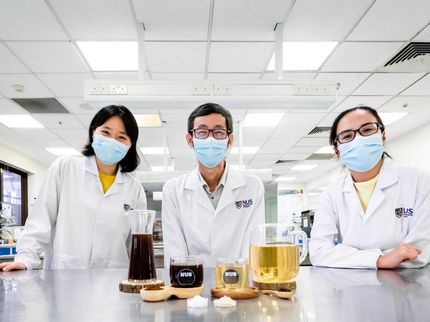Where does the special scent of thyme and oregano come from?
Advertisement
thyme and oregano are not only popular herbs for cooking, but also valuable medicinal plants. Their essential oils contain thymol and carvacrol which impart the typical flavors and are medically important. A team from Martin Luther University Halle-Wittenberg (MLU) and Purdue University in the USA has now fully identified how the plants produce these two substances. The results could simplify the breeding process and improve the pharmaceutical value of thyme and oregano. The study appears in the renowned journal "Proceedings of the National Academy of Sciences".
Thymol, which is mainly extracted from thyme, has secretolytic, antibacterial and antispasmodic properties. The plant is therefore often used in tea for colds, cough syrups and as an herbal remedy for bronchitis. In contrast, oregano contains particularly high levels of carvacrol, which has similar properties. Its smell is often associated with pizza sauce and other Mediterranean dishes. Both substances are chemically closely related and are produced by thyme and oregano in multi-stage processes. "It’s like a production line in a factory: Every step needs to be coordinated and the desired product only emerges when the steps are carried out in the right order," explains Professor Jörg Degenhardt from the Institute of Pharmacy at MLU. Instead of machines, specific biomolecules - enzymes - carry out this work in special glands on the surface of the leaves.
Together with researchers from Purdue University in the USA, the team in Halle decoded the individual production steps, thereby solving a decades-old mystery. "For a long time it was assumed that p-Cymene was an intermediate product of thymol and carvacrol synthesis. However, it was chemically not feasible for thymol or carvacrol to ultimately be produced from this substance," says Degenhardt. In fact, normal production of the two substances does not produce any p-Cymene at all, but rather an extremely unstable intermediate product. "This is only present for a few moments in the plant cells, which is why observing it is so difficult. However, it represents the hitherto missing step in the synthesis of the two substances," says Degenhardt. The processes start out the same for both thymol and carvacrol; only in step four do different enzymes that produce the respective substances come into play. In a fifth step, thymol and carvacrol can be further converted to thymohydroquinone and thymoquinone, which have anti-inflammatory and anti-tumour effects.
The researchers were also able to use these new findings to genetically reprogramme a species of tobacco, the model plant N. benthamiana, to produce thymol. "Even though this only happened in small quantities, it meant that we were able to fully understand the synthesis pathways and the associated enzymes," summarises Degenhardt.
The new findings are also important for plant breeding. "Up to now, plants have mostly been crossbred randomly with one another and then selected for cultivation based on their smell," says Degenhardt. This new molecular knowledge may one day enable the development of biomarkers for the targeted selection of plants with high essential oil content. The findings could also help to develop new active substances based on thymol, carvacrol and thymohydroquinone to fight bacterial infections, inflammation and cancer.
































































